
Store receipts
Though it’s second nature to crumple up a receipt and toss it in your purse or pocket, Will Bulsiewicz, MD, MSCI, board-certified gastroenterologist, warns against touching your proof of purchase. Many receipts are printed on thermal paper, which means they’re covered with a thin coating of powder that develops the dye needed for the type, he explains. “This powder contains BPA, an endocrine-disrupting chemical which has been linked to breast cancer, diabetes, and hormone abnormalities in children.”
He adds that many studies have shown that BPA is absorbed through the skin, making it important to limit your interaction with this chemical. “If you don’t need a receipt, ask the cashier not to print it if possible. If you do need it, ask for it to be placed in the bag; don’t place the receipt in a bag with food items, particularly items that are consumed raw. Finally, be sure to wash your hands well after handling any receipts,” he advises.
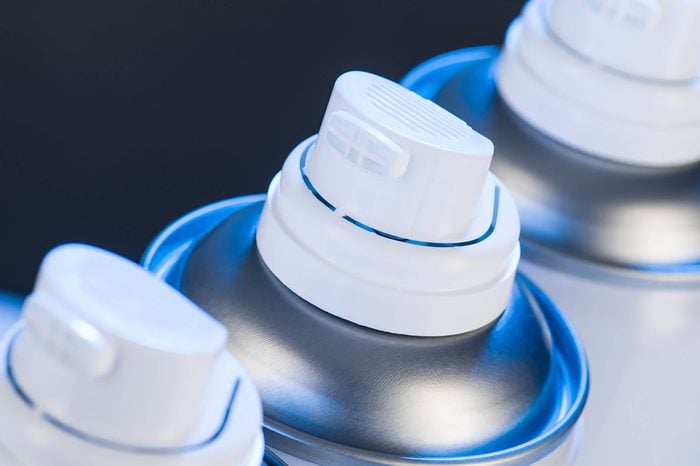
Bug sprays and repellents
Though it might prevent some bites, infectious disease specialist and clinical assistant professor Alexea M. Gaffney-Adams, MD, says some of the ingredients of your favorite bug spray may raise an eyebrow, specifically, “organophosphates,” found in pesticides, herbicides, nerve agents, and chemical agents. They’re also known as plasticizers, which is about as scary as they sound.
“These compounds are readily absorbed through the skin and inhaled. They poison insects—and humans—by disrupting neurotransmitters necessary for proper body functions. They can affect breathing and muscle function and they can cause cardiovascular collapse and death in large amounts,” she explains. “Prolonged exposures—like in farmers—have been linked to heart and lung disease, impaired memory, poor or delayed reflexes as well as cancers.”
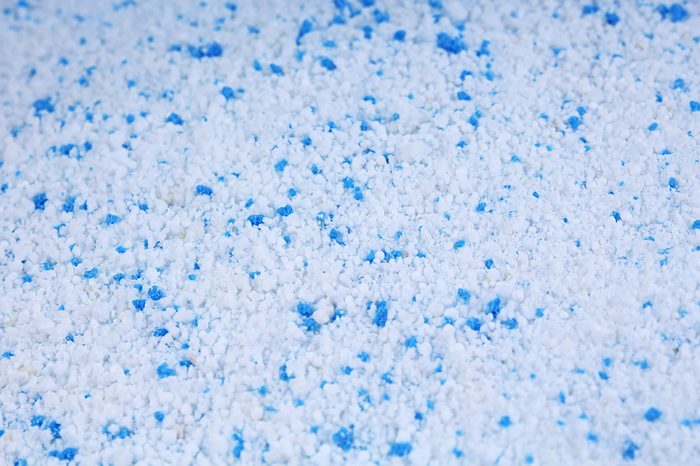
Laundry detergent
You may be surprised to know that washing your clothes can actually be ripe with risk, according to family physician and general practitioner Maskfika N. Alam, MD. In addition to being filled with harsh chemicals, “Many detergents contain ‘phenol,’ which can be easily absorbed through your skin and can cause renal and hepatic dysfunction,” she shares. When in doubt, go with an organic brand of laundry detergent, especially if you have allergies, eczema, or sensitive skin. Look out for these 10 everyday objects that could land you in the ER.

Fire retardants
Take a glance around your home, taking note of your clothing and furniture. Believe it or not, you (and your child’s) jacket might share the same dangerous chemical as your couch. Meant to keep us safe, fire retardants have actually been linked to disorders, infertility, and cancer, according to Dr. Bulsiewicz. “They are used in most infant clothing and can be found in foam cushions in sofas and chairs, as well as children’s car seats, nursing pillows, and other upholstered products,” he says. “To avoid coming into contact with fire retardants, be sure to buy only natural fiber clothing, particularly for children and infants.” And if you’re upgrading your living room’s look, Bulsiewicz recommends only opting for newer furniture products that contain foam, as most furniture made in the United States after 2005 does not contain fire retardants.
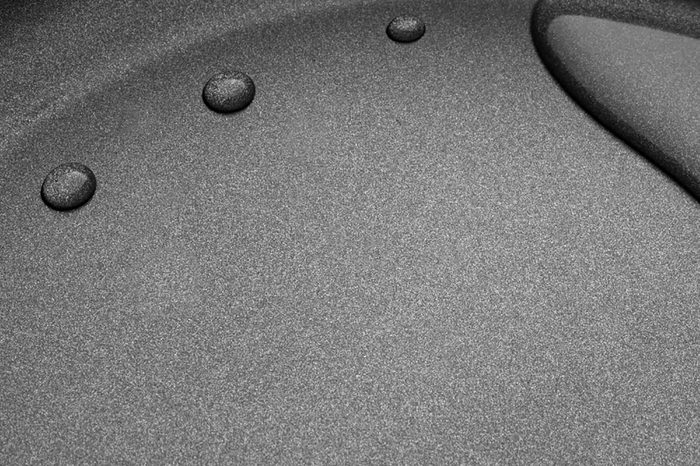
Non-stick coated cookware
If you need to whip out some miracle recipes in a hot second for your family, you might opt for non-stick coated cookware pans or casserole dishes. However, Adam S. Gropper, MD, explains these non-stick coatings can melt when they are overheated, revealing aluminum that’s super-unhealthy when digested. “Ingested aluminum has been linked to Alzheimer’s disease and several cancers. If you see flaking or gauging in your coated cookware, it’s time to replace,” he advises. Don’t miss these 15 other common kitchen items that are secretly toxic.
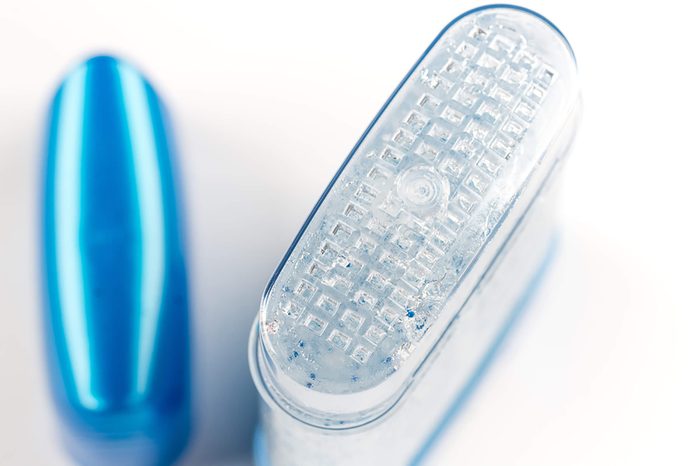
Deodorant/antiperspirant
Another surprising—and scary—place you might find aluminum? In that stick that gets a bit of under-the-arm action daily. Though meant to keep you feeling fresh and warding away stinky post-workout situations, Dr. Gropper says many formulas utilize aluminum to clot your pores and prevent excessive sweating. But since absorbing aluminum is linked to Alzheimer’s disease and both prostate and breast cancers, Dr. Gropper recommends trying out an natural antiperspirant instead.
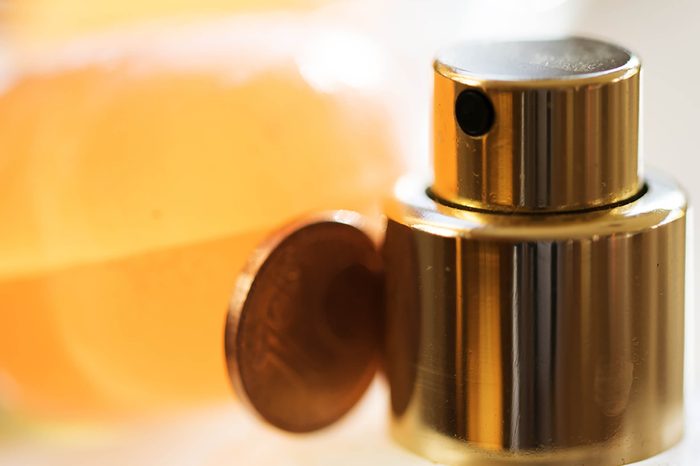
Perfumes or body spray
Though they may make you smell good, Dr. Alam says some perfumes or body sprays contain hazardous compounds that can harm the delicate mucosal surfaces of our respiratory tract. In other words, you might be coughing and sneezing up a storm. And even if you are mostly healthy, many people develop a headache in addition to a coughing fit. Here are 12 toxic ingredients your beauty products might contain.
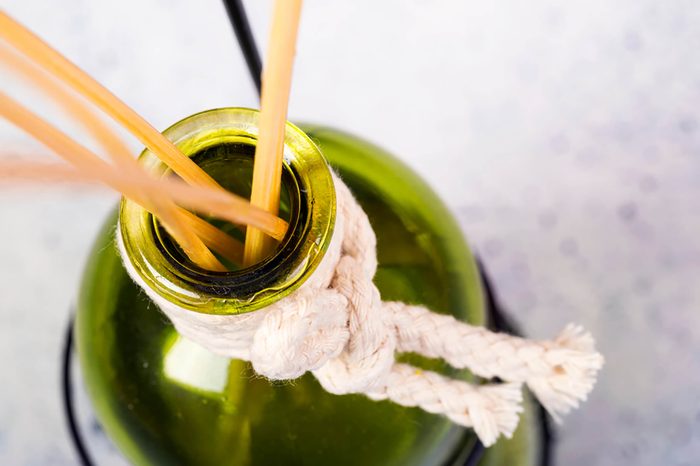
Air fresheners
In the moment, it might clear out a stench in the bathroom or one left from your trouble-making cat, but inhaling these chemicals isn’t safe for anyone in your family, your pooch included. Similar to perfumes, Dr. Alam explains the artificial fragrances that are added to air fresheners can pose the same symptoms, even irritating your eyes and causing inflammation. “Chronic inhalation of phthalates can cause asthma and can damage your lungs.” Check out these 15 other hidden home dangers you shouldn’t ignore.
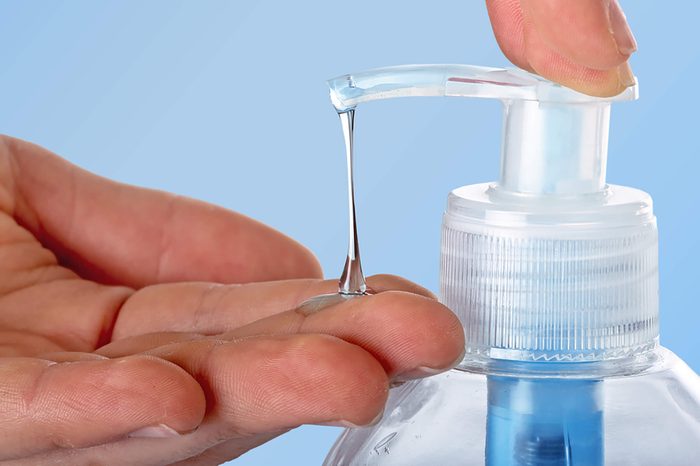
Hand sanitizer and antibacterial soaps
You may think these are helping you stay healthy and avoid the office cold, but these products could do more harm than good in the long run. The compound triclosan is found in more than 75 percent of hand sanitizers and antibacterial soaps, as well as in gym equipment, linens, underwear, plastic products, and more. “It is another ‘endocrine buster’ resulting in reproductive toxicity through alterations in hormone regulation according to the FDA,” Dr. Gaffney-Adams explains. Triclosan has been linked to thyroid disease, allergies, asthma, and eczema. If that’s not enough, it is also a suspected carcinogen, and when you overuse these products, you may build an antibiotic resistance in bacteria, making human infections more difficult to treat, she adds. Next, read up on the 19 toxins that could be lurking in your backyard.